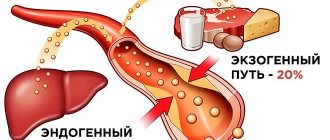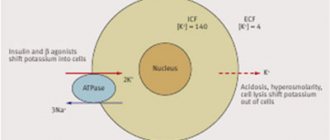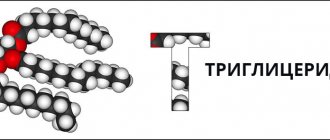Ionized calcium
Ionized calcium is calcium that circulates freely in the blood and is not bound to proteins. Therefore, it is also called free calcium.
* Before the start of the study, the test tube should not be opened.
Synonyms Russian
Free calcium, calcium ions.
English synonyms
Ca, Calcium, Calculated Ionized Serum, Dialyzable Calcium, Calcium Free, Calcium Filterable, Calcium Unbound.
Research method
Ion selective electrodes.
Units
mmol/l (millimoles per liter).
What biomaterial can be used for research?
Venous blood.
How to properly prepare for research?
- Do not eat for 12 hours before the test.
- Avoid physical and emotional stress 30 minutes before the test.
- Do not smoke for 30 minutes before the test.
General information about the study
Calcium is a vital mineral that comes into the body from food. Functions of calcium: formation of the bone frame, participation in the conduction of neuromuscular impulses, in the contraction of cardiac and skeletal muscles, in blood clotting (translation of prothrombin into thrombin). It is found in teeth and bones, its “plasma” part is filtered by the kidneys and is mainly absorbed back in the absence of disturbances in calcium metabolism.
Ionized calcium is a cation that circulates freely in the blood and makes up 46-50% of all blood calcium. Its level increases when blood pH decreases and decreases when alkalization occurs. For every 0.1 unit decrease in pH, ionized calcium responds with an increase of 1.5-2.5%.
Because ionized calcium levels are independent of blood protein levels, they are sometimes a more reliable indicator of primary hyperparathyroidism in people with low albumin levels than total blood calcium levels.
What is the research used for?
The total blood calcium level is often sufficient for a preliminary assessment of calcium metabolism. It usually reflects the amount of free calcium in the blood, since often the balance between bound and free calcium is a stable and fairly predictable value. However, in some people this ratio is disrupted, so the level of total calcium is not a criterion for assessing overall calcium metabolism. In such cases, checking the ionized calcium becomes necessary.
Large fluctuations in the concentration of ionized calcium can cause the heart to slow down (bradycardia) or speed up (tachycardia), muscle spasms, confusion, or even coma. In more severe cases, periodic determination of ionized calcium levels is especially important for prescribing further treatment and preventing more serious complications.
When is the study scheduled?
- Often together with a test for parathyroid hormone, their concentrations are checked in people with chronic renal failure to diagnose hyperthyroidism caused by phosphate retention in the body, as well as to monitor the results of treatment.
- If you suspect an increase in the level of ionized calcium: weakness, fatigue, loss of appetite, stool retention, frequent urination, vomiting, thirst.
- If you suspect a decrease in the level of ionized calcium: cramping pain in the abdomen, trembling of the fingers, muscle twitching, numbness of the hands and skin around the mouth, as well as muscle spasms of the same areas.
- When the patient is in serious condition and receives intravenous solutions and blood replacement fluids.
- In the preoperative period.
- For albumin disorders.
What do the results mean?
Reference values: 1.16 - 1.32 mmol/l.
Reasons for increasing the level of ionized calcium:
- acidosis,
- excess vitamin D (increased levels of total blood calcium and its ionized form),
- malignant neoplasms (some tumors secrete a substance similar in action to parathyroid hormone),
- primary hyperparathyroidism (increased production of parathyroid hormone),
- benign parathyroid adenomas,
- metastatic bone damage (gradual destruction of their structure with the release of calcium into the general bloodstream).
Reasons for decreased ionized calcium levels:
- alkalosis,
- burn disease,
- transfusion of citrated blood (binding of calcium with citrate),
- hyperosmolar states (resulting change in pH),
- hypoparathyroidism and pseudohypoparathyroidism (decreased production of parathyroid hormone),
- magnesium deficiency,
- multiple organ failure syndrome,
- pancreatitis,
- postoperative period,
- sepsis,
- injury,
- lack of vitamin D.
What can influence the result?
- Prolonged exposure of a blood sample to open air may cause an increase in pH and a subsequent decrease in ionized calcium levels. Therefore, blood should be collected under anaerobic conditions.
- There are daily fluctuations in the level of the indicator with the lowest values in the morning and with a maximum increase in the evening.
- For women using oral contraceptives, the results may be below average, while for those using injectable contraceptives, the results may be higher.
- Calcium salts, hydralazine, lithium salts, thyroxine, and thiazide diuretics increase the level of ionized calcium. Anticonvulsants, danazol, foscarnet, furosemide reduce it.
- The concentration of ionized calcium is significantly reduced in older people.
Important Notes
- The study must be carried out within 48 hours after taking the biomaterial.
- This test is the most reliable for diagnosing hyperparathyroidism in people with low albumin levels.
Also recommended
- Microalbumin in urine
- Serum magnesium
- Serum albumin
- Total protein in whey
- Vitamin D, 25-hydroxy (calciferol)
- Serum calcitonin
- Thyroid-stimulating hormone (TSH)
- Free thyroxine (free T4)
- Total thyroxine (T4)
- Total triiodothyronine (T3)
- Free triiodothyronine (free T3)
- Parathyroid hormone, intact
Who orders the study?
Therapist, nephrologist, endocrinologist, gastroenterologist, nutritionist, traumatologist.
Osteoporosis
The main disease caused by calcium deficiency is osteoporosis. This is a disease that affects the structure and strength of bones and increases the risk of fractures. Osteoporosis is one of the four leading causes of death and disability. In addition to osteoporosis, the TOP 4 includes cardiovascular diseases, diabetes mellitus and malignant tumors.
There are no early manifestations of osteoporosis - the process of bone destruction can take decades. Its main manifestation is fractures with minor injuries or without them at all.
Why is this disease dangerous?
It is rarely diagnosed in its early stages, and even less often treated, due to the lack of symptoms. Many people believe that if it doesn’t hurt, then there is no disease.
It is mistakenly believed that osteoporosis is a disease of older people. Yes, the majority of registered patients are over 50 years old. But the disease initially occurs when you are between 25 and 35.
According to Russian recommendations, assessment of the risk of osteoporosis and fractures should be carried out in all women and men over 50 years of age. However, if there is a risk of developing osteoporosis, doctors advise that everyone younger than this age be checked at least once a year.
You may be at risk of developing osteoporosis if: You may be at risk of developing osteoporosis if:
- There has been a history of osteoporosis in your family;
- You are at risk of calcium deficiency;
- You suffered fractures when you were slightly hit or fell from a small height;
- Menopause occurred before age 45;
- You are taking medications (steroids) to treat asthma, arthritis, or intestinal problems. Or if you have been taking antidepressants, anticonvulsants for more than a month;
- You are a woman and have an irregular cycle;
- You have definitely been diagnosed with a hormonal imbalance.
If at least one of the points applies to you, we advise you to undergo an examination and take an analysis that will evaluate your mineral metabolism. It will allow you to evaluate the processes of absorption, transport and release of calcium, phosphorus, magnesium in the bones and blood. Don't forget to add a vitamin D test to it. Get tested and take it to your doctor (generalist or osteopath). Depending on the results, he will prescribe you the correct treatment or adjust it.
Indications for the study
Blood test for calcium
is prescribed in the following cases:
- planned preventive examination;
- kidney pathologies (in patients with such diseases, the level of macronutrients is often reduced);
- suspicion of excess Ca (in the presence of symptoms such as nausea, loss of appetite, weakness, excessive thirst);
- frequent muscle cramps;
- diseases that are associated with calcium metabolism disorders (oncology, thyroid pathologies, etc.);
- some abnormalities detected on the cardiogram;
- symptoms of macronutrient deficiency (hand tremors, muscle cramps, spastic abdominal pain);
- treatment of calcium metabolism disorders.
conclusions
Calcium is the basis of bones and an assistant in blood, muscles and blood vessels. He can play for a good team and help the body. Or he can join the team of bad guys and destroy organs by depositing in them.
You can’t take calcium just like that, without measuring it in your blood and without a doctor’s prescription.
Calcium enters our body with food or supplements. Calcium passes from the blood to the bone and, more often, back - from the bones to the blood, destroying them. Donating blood only for general calcium is not very informative. It is necessary to evaluate ionized calcium. Since the process of calcium absorption is affected by vitamin D, phosphorus, magnesium, parathyroid hormone and calcitonin, they need to be checked together.
This is very simple to do: take the “Mineral Metabolism” complex along with a vitamin D test. Take the results to a therapist or osteopath. He will evaluate them and possibly prescribe treatment.
General information
The macroelement circulates in the bloodstream in bound and free (ionized) form. If a person is healthy, the amount of these fractions is balanced. In some pathologies this balance is disrupted. In such cases, determining the amount of free fraction is of greatest diagnostic importance. It is this substance that has physiological activity and can be used by the body. Calcium is necessary for the human body to function normally. It is required for the transmission of nerve impulses, contraction of the muscles of the heart and skeleton, the formation and maintenance of normal bone structure, and blood clotting. Most of this macroelement is concentrated in bone tissue. No more than one percent of its total quantity circulates in the bloodstream. Ca is excreted from the body every day in urine. To maintain its reserves at a constant level, the daily intake of this macronutrient should be about one gram. Its amount is related to the level of phosphorus. There are several mechanisms for the exchange of this macronutrient. With a lack of calcium, phosphate levels increase. In this case, parathyroid hormone is produced, under the influence of which bone tissue is destroyed and the calcium necessary for the body is released. When there is an excess of calcium, calcitonin is synthesized in the thyroid gland. Under the influence of this substance, Ca moves from the bloodstream to bone tissue. The hormone produced by the parathyroid glands increases the absorption of Ca in the gastrointestinal tract.
This test determines the amount of cation in the bloodstream. It is impossible to assess calcium reserves in bone tissue based on its results; they characterize only the metabolism of the macroelement.
Calcium levels in the body
Blood contains only 1% of the total amount of calcium contained in the body. The rest is concentrated in tissue cells, forming combinations with phosphorus. Plasma is saturated with several forms of the mineral:
- ionized or free calcium (Ca2+), its share: 52–58%;
- associated with protein fractions: up to 38%;
- complexed: composed of salts with bicarbonates, lactates, phosphates and citrates: about 10%.
A normal general level of calcium ensures healthy metabolism, delivery and absorption of other minerals into cells, absorption of vitamins, synthesis of hormones, formation of structures of the skeletal system, teeth, and soft tissues. It is necessary for hematopoiesis, proper functioning of the central nervous system, and maintaining salt metabolism.
The overall level of an essential macronutrient in the body varies depending on age and physical condition. Its general indicators for different categories:
- 1.9–2.6 mmol/l: in newborns;
- 2.25–2.7 mmol/l: in children under 4 years of age;
- 2.1–2.55 mmol/l: in children and adolescents under 18 years of age;
- 2.15–2.5 mmol/l: in adults;
- 2.22–2.55 mmol/l: in elderly people over 65 years of age.
To maintain the normal level of calcium, it must be supplied to the body daily through food. In childhood, the need for the element is about 200 to 1000 mg. Adults need 1200–1400 mg per day. During pregnancy and lactation in women, its dose should be at least 1500 mg. The absorption of the mineral is affected by:
- hormonal background;
- Lifestyle;
- food quality;
- level of phosphorus, magnesium, parathyroid hormone, active form of vitamin D in the body;
- the presence of systemic diseases.
With age, the absorption and content of calcium in the body inevitably decreases. This is caused by a decrease in the activity of the intestines, kidneys, and changes in the endocrine functions of the glands. The mineral is constantly consumed, its salts are excreted through urine and metabolic products, so the development of deficiency is more common than excess. But hypercalcemia is also a likely condition. It occurs due to increased levels of albumin in the blood. This protein provokes the accumulation of bound calcium, which affects its overall level.








